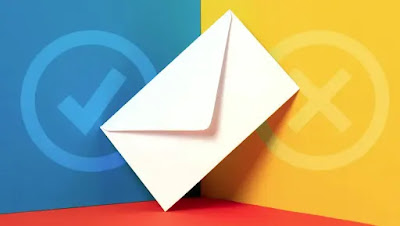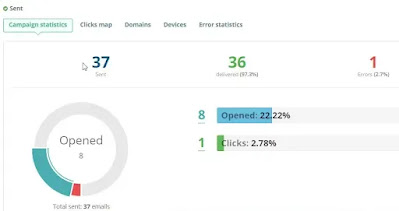Email marketing is a powerful tool that can help businesses of all sizes reach and engage with their target audience in a cost-effective and measurable way. It is one of the most effective forms of direct marketing, as it allows you to build relationships with your customers and keep them informed about your products and services.
Email marketing is the process of sending promotional or informational messages to a list of email addresses. These messages can be sent to a large number of recipients at once, or targeted to specific segments of your email list. Email marketing can include a variety of different types of messages, such as newsletters, promotional offers, event invitations, and more.
Email marketing works by building a list of email addresses from potential and current customers. This list is then used to send targeted and personalized messages to the individuals on the list. By building an engaged email list, businesses can create a direct line of communication with their audience, and increase the chances of conversion and sales.
Building an Email List:
Acquiring email addresses is the first step in creating a successful email marketing campaign. There are several strategies businesses can use to build their email list, such as:
- Offering a sign-up incentive, such as a discount or free resource.
- Adding a sign-up form to your website or social media pages.
- Collecting email addresses at events or in-store.
- Asking current customers for referrals.
Once you have a list of email addresses, it's important to keep it clean and engaged. This can be achieved by:
- Removing inactive or unengaged subscribers from your list.
- Sending regular and relevant content to keep subscribers interested.
- Providing an easy way for subscribers to unsubscribe or update their preferences.
- Segmenting your list to target specific groups of subscribers with tailored content.
By following these strategies and best practices, businesses can build a strong and engaged email list that will be a valuable asset in their email marketing efforts.
Strategies for Acquiring Email Addresses:
- Offer a Sign-up Incentive: One of the most effective ways to acquire email addresses is to offer a sign-up incentive, such as a discount or a free resource. This can be a great way to entice potential subscribers to provide their email addresses.
- Add a Sign-up Form to Your Website or Social Media Pages: Another effective way to acquire email addresses is to add a sign-up form to your website or social media pages. This can be a simple way for visitors to your site to provide their email addresses and opt-in to your email marketing campaigns.
- Collect Email Addresses at Events or In-Store: Collecting email addresses at events or in-store is another great way to build your email list. This is a great opportunity to engage with potential subscribers in person and encourage them to sign up for your email campaigns.
- Ask Current Customers for Referrals: Asking current customers for referrals is another effective way to acquire email addresses. By asking your current customers to refer friends and family to your email campaigns, you can expand your reach and acquire new subscribers.
Tips for Maintaining a Clean and Engaged Email List:
- Remove Inactive or Unengaged Subscribers: It's important to regularly remove inactive or unengaged subscribers from your email list. These individuals are unlikely to open or engage with your emails, and can lower your overall engagement rates.
- Send Regular and Relevant Content: To keep your subscribers engaged, it's important to send regular and relevant content. This can include a mix of promotional and informational emails that are tailored to your subscribers' interests and needs.
- Provide an Easy Way for Subscribers to Unsubscribe or Update their Preferences: Providing an easy way for subscribers to unsubscribe or update their preferences is important for maintaining a clean email list. This can help to reduce the number of unsubscribes and increase overall engagement.
- Segment Your List: Segmenting your list allows you to target specific groups of subscribers with tailored content. By segmenting your list, you can ensure that your emails are relevant and engaging to each individual subscriber.
Creating Effective Emails:
Best Practices for Email Design and Layout:
- Using a consistent template for all emails.
- Keeping the design simple and easy to read.
- Using a clear and easy-to-read font.
- Optimizing the email for mobile devices.
- Using a clear and specific call-to-action.
Tips for Crafting Compelling Subject Lines and Headlines:
- Keeping the subject line short and to the point.
- Using action words and phrases in the subject line.
- Personalizing the subject line with the recipient's name or location.
How to Write Effective Email Copy:
The copy in your emails is just as important as the design and layout. To write effective email copy, it's important to:
- Use a clear and conversational tone.
- Keep the copy concise and to the point.
- Use bullet points and numbered lists to break up the text.
- Use images, videos, and other multimedia to supplement the text.
How to Use Images, Videos, and Other Multimedia in Emails:
Using images, videos, and other multimedia in emails can help to make your emails more engaging and effective. Some tips for using multimedia in emails include:
- Using high-quality images that are relevant to the message.
- Using videos to supplement the text or provide more information.
- Using GIFs and other animations to add visual interest.
- Optimizing multimedia for different email clients and devices.
By keeping these best practices and tips in mind, businesses can create effective and engaging emails that will resonate with their target audience.
Segmenting and Targeting Emails
How to segment your email list for more effective targeting
Segmenting your email list is the process of dividing it into smaller groups of individuals with similar characteristics or interests. By segmenting your list, you can target specific groups of subscribers with tailored content, increasing the effectiveness of your email campaigns. Some ways to segment your list include:
- Demographics: segmenting by age, gender, location, etc.
- Behavioral: segmenting by purchase history, website behavior, email engagement, etc.
- Interests: segmenting by the products or services they are interested in.
Strategies for personalizing emails
Personalizing emails is the process of tailoring the content and messaging of an email to the individual recipient. By personalizing your emails, you can increase engagement and conversions. Some strategies for personalizing emails include:
- Using the recipient's name in the subject line or body of the email.
- Sending personalized recommendations or product suggestions.
- Sending birthday or anniversary messages.
How to use automation and triggers to send targeted and timely emails
Email automation allows you to send targeted and timely messages to your subscribers without the need for manual intervention. This can be done through the use of triggers, which are events that trigger an automated email to be sent. Some examples of triggers include:
- Welcome emails: sent to new subscribers.
- Abandoned cart emails: sent to customers who have added items to their cart but not completed the purchase.
- Re-engagement emails: sent to inactive subscribers.
By segmenting and targeting your email list, personalizing your emails, and using automation and triggers, businesses can improve the effectiveness of their email campaigns and increase conversions and sales.
Measuring Success:
Key Metrics to Track for Email Marketing:
To measure the success of your email marketing campaigns, it's important to track key metrics such as:
- Open rate: the percentage of recipients who opened your email.
- Click-through rate: the percentage of recipients who clicked on a link in your email.
- Bounce rate: the percentage of emails that were undeliverable and returned to the sender.
- Unsubscribe rate: the percentage of recipients who unsubscribed from your email list.
- Conversion rate: the percentage of recipients who completed a desired action, such as making a purchase.
How to Use Analytics to Improve Email Campaigns:
By analyzing the data from your email marketing campaigns, you can gain valuable insights into what's working and what's not. This can help you to improve the effectiveness of your campaigns over time. Some ways to use analytics to improve email campaigns include:
- Identifying patterns in open and click-through rates.
- Identifying which subject lines and headlines are most effective.
- Identifying which segments of your list are most engaged.
- Identifying which calls-to-action are most effective.
Tips for A/B Testing and Optimizing Emails:
A/B testing is the process of comparing two versions of an email to determine which one is more effective. By A/B testing different elements of your emails, such as subject lines, headlines, and calls-to-action, you can optimize your emails for better performance. Some tips for A/B testing and optimizing emails include:
- Test one element at a time to accurately identify the impact of the change.
- Test a representative sample of your email list.
- Use statistical significance testing to determine if the results are significant.
- Implement the winning version and test again.
By tracking key metrics, using analytics to improve campaigns, and A/B testing and optimizing emails, businesses can continually improve the effectiveness of their email marketing efforts and increase conversions and sales.
Conclusion:
Email marketing is a powerful tool that can help businesses of all sizes reach and engage with their target audience in a cost-effective and measurable way.
In this blog post, we have discussed key strategies and best practices for building an email list, creating effective emails, segmenting and targeting messages, measuring success, and continually improving your email marketing efforts.
Some key takeaways include:
- Offering a sign-up incentive, such as a discount or free resource, is an effective way to acquire email addresses.
- Keeping your email list clean and engaged by removing inactive or unengaged subscribers and segmenting your list to target specific groups of subscribers.
- Creating effective emails that include best practices for design and layout, crafting compelling subject lines and headlines, writing effective email copy, and using images, videos, and other multimedia.
- Segmenting your email list to target specific groups of subscribers, personalizing emails and using automation and triggers to send targeted and timely messages.
- Measuring success by tracking key metrics, using analytics to improve campaigns and A/B testing and optimizing emails.
Additional resources for further learning and improvement include:
- Email marketing guides and tutorials from platforms such as Mailchimp, Constant Contact, and Campaign Monitor.
- Blogs and articles on email marketing best practices from industry experts such as Neil Patel and Ann Handley.
- Books on email marketing such as "Email Marketing Rules: Checklists, Frameworks, and 150 Best Practices for Business Success" by Chad White.
By following these strategies and best practices, businesses can create effective and engaging email marketing campaigns that will help them to reach and engage with their target audience, increase conversions and sales.
If you are interested in email marketing, we highly recommend this professional and complete course : Secret Email System?










